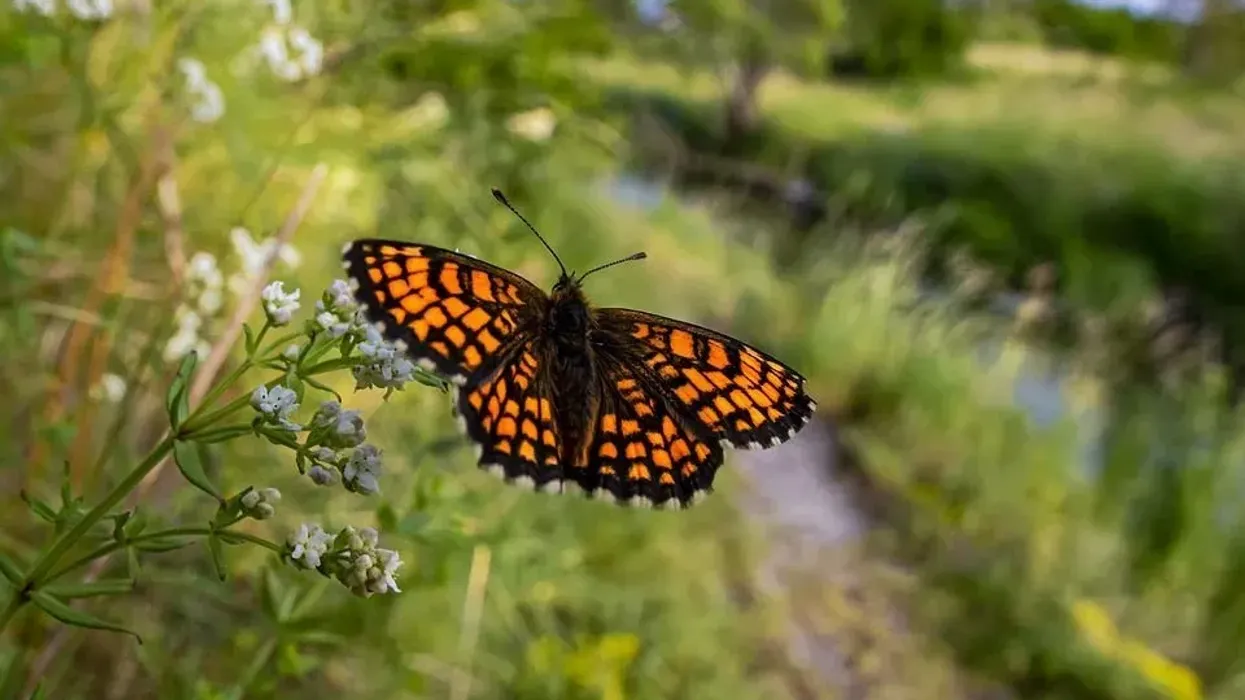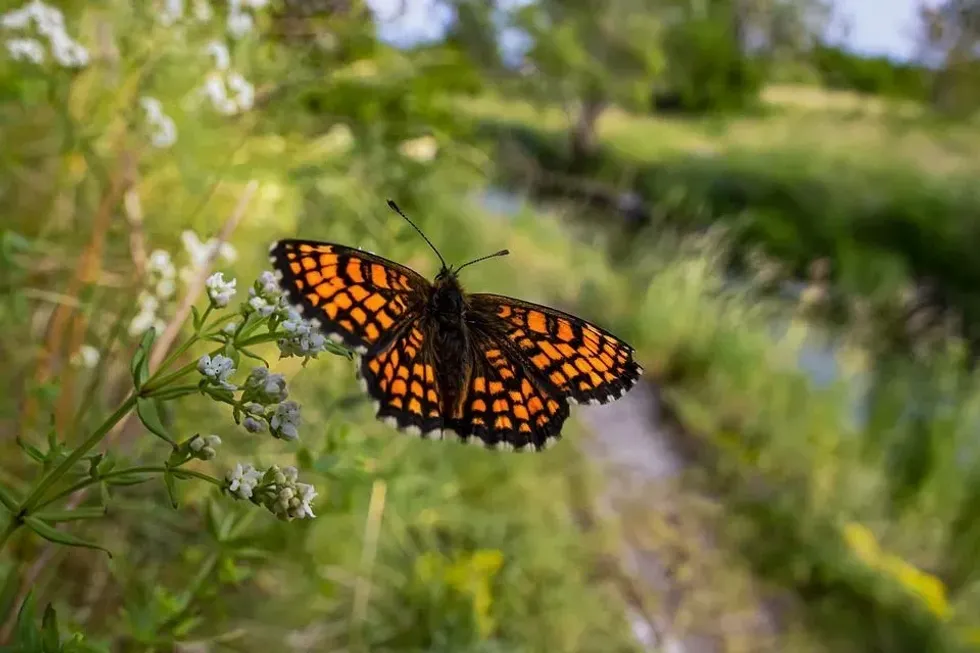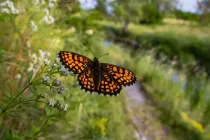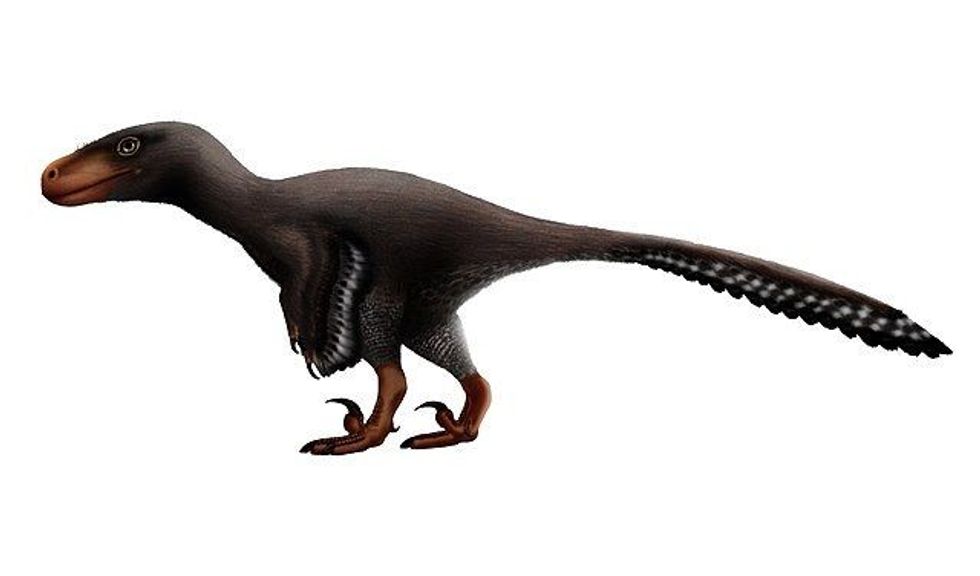Fun Heath Fritillary Facts For Kids

Content
- What type of animal is a heath fritillary?
- What class of animal does a heath fritillary belong to?
- How many heath fritillaries are there in the world?
- Where does a heath fritillary live?
- What is a heath fritillary's habitat?
- Who do heath fritillaries live with?
- How long does a heath fritillary live?
- How do they reproduce?
- What is their conservation status?
- What do heath fritillaries look like?
- How cute are they?
- How do they communicate?
- How big is a heath fritillary?
- How fast can a heath fritillary fly?
- How much does a heath fritillary weigh?
- What are the male and female names of the species?
- What would you call a baby heath fritillary?
- What do they eat?
- Are they dangerous?
- Would they make a good pet?
- Did you know...
- Is the heath fritillary endangered?
- Do heath fritillaries migrate?
The heath fritillary (Mellicta athalia) is a rare butterfly found only in a few critical habitats: coppiced woodland and sheltered heathland, where it may be observed flying low to the ground in a unique flutter-and-glide pattern.
The heath fritillary is restricted to a few locations in Somerset, Devon, Cornwall, and Kent, and has also been reintroduced in Essex. Despite its limited range, this heath fritillary butterfly can be observed in huge numbers in excellent years.
It establishes distinct colonies and seldom ventures away from its primary breeding sites.
The heath fritillary is one of our most endangered butterflies, and it was thought to be on the verge of extinction in the late 1970s.
Their distribution is limited to sections of the South West and South East of England. As strange as it may sound, the extinction of the large blue butterfly in 1979 worked in favor of this species since the shock felt by many entomologists resulted in a reinvigorated effort to protect the heath fritillary.
This necessitated a thorough understanding of the butterfly's requirements, and as a consequence of Martin Warren's study, proper habitat management strategies were implemented, saving the butterfly from extinction.
Read on to learn more and check out our purple emperor butterfly and morpho butterfly facts too.
Heath Fritillary Interesting Facts
What type of animal is a heath fritillary?
Heath fritillary (Melitaea athalia) are a swarm of butterflies from the Nymphalidae family. These butterflies, scientifically known as Melitaea athalia, are well-known for their stunning orange, black, and white coloration.
Aside from being recognized for their coloration, they are also noted for their migratory tendencies, pollination skills, and milkweed leaf-eating habits during the larval stage. This butterfly conservation is needed.
What class of animal does a heath fritillary belong to?
The heath fritillary (Melitaea athalia) is a member of the class Insecta, which is the biggest component of the phylum Arthropoda. Members of the class Insecta are very varied and are frequently classified based on the existence of jointed appendages.
How many heath fritillaries are there in the world?
The heath fritillary butterfly is a widespread butterfly species across the world. As a result, experts have yet to determine the actual number of these butterflies.
Where does a heath fritillary live?
The heath fritillary habitat is in the woods. The heath fritillary (Melitaea athalia) is a Nymphalidae butterfly.
It inhabits the heathland, grassland, and coppiced woodland throughout the Palaearctic distribution, from western Europe to Japan. It is restricted to a few habitats in Somerset, Devon, Cornwall, and Kent, and has also had distribution in Essex. Despite its limited distribution, this butterfly can be observed in huge numbers in excellent years.
In particular, in England, this species has three different habitats. It establishes distinct colonies and seldom ventures away from its primary breeding sites.
What is a heath fritillary's habitat?
The heath fritillary butterfly likes two types of habitat: woodland or recently fallen forest on acid soils, and sheltered heathland valleys on Exmoor where common cow wheat thrives as scattered plants on mineral soils among vegetation dominated by Bilberry.
This butterfly is restricted to a few locations in Somerset, Devon, and Cornwall in the southwest of England and Kent in the southeast, where it has been reintroduced into places in Essex.
It does not exist in Wales, Scotland, Ireland, the Isle of Man, or the Channel Islands.
This butterfly can be observed in huge numbers at select locations during excellent years despite its limited range.
This butterfly is ubiquitous across the continent and is one of the most frequent butterflies observed in various areas. This butterfly establishes distinct colonies and seldom ventures away from its primary breeding sites.
Who do heath fritillaries live with?
The heath fritillary is mostly stationary, with adults seldom migrating more than 328 ft (100 m); nevertheless, some have been observed spreading up to 1.2 mi (2 km). The health fritillary butterflies typically move in groups, although they are not known to dwell alone.
Female butterflies deposit eggs and then abandon them, leaving the larva to develop on their own. When it comes to mating, male butterflies are extremely territorial.
How long does a heath fritillary live?
The average mature life cycle of a butterfly species is two to four weeks or fewer. Some have a significantly longer lifespan, like, the mourning cloak, which may survive for over a year. Monarchs and swallowtails live for around a month on average. Other species overwinter in the adult stage.
How do they reproduce?
Females generally pick which males they wish to mate with, and males compete for the females' attention as a result. Some males travel in quest of females, patrolling nearly constantly during good weather in the hope of meeting a receptive female, while others sit on a good vantage point to maintain watch.
Male peacocks, for example, establish territories on the ground, generally at a sunny area at the corner of a field, hedge, or forest ride waiting to intercept passing females. These regions are fiercely protected. The female heath fritillary lays her eggs in batches of 80–150 on the underside of the leaves of the host plant.
Caterpillars dwell in colonies on the host plant in a cobweb nest. When eggs are deposited, they are pale cream.
Within two days, the color turned pale yellow, and then dark gray a few days before hatching. Egg reaches maturity in two to three weeks.
Larvae eat their eggshells on hatching. The larvae are black with a few white spots on them. A pupa is a status in which some insects transition from immature to mature.
The pupa stage comes after the larval stage. Depending on climate and species, the pupa stage might span weeks, months, or even years.
What is their conservation status?
The Wildlife and Countryside Act of 1981 protects this heath fritillary species in the United Kingdom. Priority Species as defined by the UK Post-2010 Biodiversity Framework. The International Union for Conservation of Nature has not yet reviewed the status of the heath fritillary butterfly, thus it is Not Evaluated. Butterfly conservation is required.
Heath Fritillary Fun Facts
What do heath fritillaries look like?
The wing colors of the heath fritillary set it apart. The heath fritillary is only found in a few specialized environments, where it flits and glides near to the ground with distinctive flits and glides.
It's an orange-brown fritillary with no faint yellow stripes on the top part of the wings or rows of dots along the hind wing border. The patterning on the underside of the hind wing differentiates dark individuals from false-heath fritillaries.
The underside features red and white bands, with each vein brown. The outermost pale yellow stripe on the heath fritillary's wing is the same color as the row of arcs on the inside, and the strip created by the orange arcs has no black dots.
The hind wing has pale yellow checks and a series of orange arcs towards the edge.
Orange embroidery may also be found on the wing's base side. Both wing edges include a thin black-edged light yellow strip and an inner row of pale yellow arcs.
The false-heath fritillary's outermost band is a darker yellow than the strip formed by white arcs alongside it. There are additional black blotches in the orange strip that runs between the white arcs.
How cute are they?
The heath fritillary butterfly has a really attractive appearance and is especially sweeter when it flies due to its hue. It is adorable, and witnessing a heath fritillary butterfly could be a sign that an important person will enter your life, although this is not factually proven.
The adults' orange black and pale yellow wings give it a very charming look.
How do they communicate?
Their communication style differs because they communicate through various chemical cues. Males generate chemicals known as pheromones, which are utilized to entice females. Some animals communicate with one another through the use of sound.
How big is a heath fritillary?
The wingspan of heath fritillaries is 1.5-1.8 in (39–47 mm). The upper side is mostly dark brown and orange-brown, with dark brown delineating the orange-brown spots along and across the wing veins; the wings have a white fringe through which the dark brown extends.
How fast can a heath fritillary fly?
The speed at which they travel is unknown.
How much does a heath fritillary weigh?
While the average weight of a heath fritillary butterfly is unknown, a male butterfly typically weighs around 0.00106 lb (0.48 g) and a female butterfly weighs around 0.001 lb (0.45 g).
What are the male and female names of the species?
Members of the Melitaea athalia species do not have a distinct name based on their sex. The males are known as male heath fritillary, while the females are known as female heath fritillary. Females lay their eggs only when it is warm.
What would you call a baby heath fritillary?
A young heath fritillary is a term given to a newborn heath fritillary butterfly. Though it is referred to be larval at the time of birth. When eggs are deposited, they are pale cream. Within two days, the color turned pale yellow, and then dark gray a few days before hatching.
What do they eat?
The majority of mature butterflies' food includes sipping nectar from blooms using their tongues, which work similarly to straws. A subset of them virtually never visits flower plants, preferring to feed on tree sap food, decomposing animal waste, and other organic substances.
Almost all butterfly caterpillars consume plants material. Caterpillars mostly have host plant leaves underside as their food, although some species consume seeds and seed pods, while others specialize in flowers.
Most species will exclusively consume a limited set of closely related plant species; for example, pearl crescent caterpillars will eat aster species. Some species, such as gray hairstreaks, consume a broad variety of plants, whereas others eat only one type of plant.
Are they dangerous?
Heath fritillaries are mostly harmless insect groupings. These creatures, however, are classified as poisonous and are inedible to prospective predators due to their feeding habits, particularly during the caterpillar phase. Heath fritillaries retain and absorb the poisons found in the toxic milkweed plant while eating.
This means the butterfly is poisonous for potential predators such as birds, mice, the Chinese mantis, and the Asian lady beetle. The poisons, however, do not kill these carnivores. The heath fritillary is not hazardous to humans.
Would they make a good pet?
Yes, the heath fritillary butterfly makes an excellent pet, although it is rarely kept as a pet. Because they are so little, you cannot pet them because they can fly anywhere and risk being killed. They must be let to fly freely in the air since they tend soaring high in the sky.
Did you know...
In South East England, colonies can be found in forests where the larval foodplant, common cow-wheat, thrives. Colonies are found in South West England on heathlands that host the larval foodplants ribwort plantain (Plantago lanceolata) and germander speedwell (Veronica chamaedrys).
The butterfly has long been associated with the traditional technique of forest coppicing, earning it the label 'Woodman's Follower' since it follows the cycle of cutting around a wood.
Dark specimens may resemble the false-heath fritillary, but the patterning on the underside of the hind wing distinguishes them.
Is the heath fritillary endangered?
The uncommon heath fritillary was on the verge of extinction in the 1970s, but conservation efforts saved it. However, it is still restricted to a few locations in the south of England.
Many heathland and woodland habitats are managed carefully by the Wildlife Trusts for the benefit of the heath fritillary. Heathlands and woods are preserved in excellent condition by grazing with traditional breeds, clearing brush, and coppicing, to sustain invertebrates and, in turn, the bigger animals that prey on them.
You can assist by volunteering for your local Trust, and you'll meet new people and acquire new skills along the way.
Do heath fritillaries migrate?
Heath fritillaries are mostly stationary, with adults seldom migrating more than 328 ft (100 m); nevertheless, some have been observed spreading up to 1.2 mi (2 km).
Here at Kidadl, we have carefully created lots of interesting family-friendly animal facts for everyone to discover! For more relatable content, check out these green june beetle facts and Eastern-eyed click beetle facts for kids.
You can even occupy yourself at home by coloring in one of our free printable heath fritillary coloring pages.
western europe england southern france Southern Switzerland Southern Finland
Get directionsWe Want Your Photos!
More for You
Bachelor of Fashion Technology specializing in Fashion Merchandising

Shivangi PandeyBachelor of Fashion Technology specializing in Fashion Merchandising
Shivangi is pursuing a Bachelor's degree in Fashion Technology from the National Institute of Fashion Technology. She has a strong passion for the English language and communication, with a keen interest in fashion blogging. Shivangi's educational background and interests complement her ability to create engaging and informative content for readers.
Postgraduate Diploma in Management

Sakshi RaturiPostgraduate Diploma in Management
Sakshi has experience in marketing strategy, social media planning, and recruiting industry experts for capstone projects, she has displayed a commitment to enhancing their skills and knowledge. She has won multiple awards, including a Certificate of Appreciation for Creative Writing and a Certificate of Merit for Immaculate Turut, and is always seeking new opportunities to grow and develop.
Disclaimer
1) Kidadl is independent and to make our service free to you the reader we are supported by advertising. We hope you love our recommendations for products and services! What we suggest is selected independently by the Kidadl team. If you purchase using the Buy Now button we may earn a small commission. This does not influence our choices. Prices are correct and items are available at the time the article was published but we cannot guarantee that on the time of reading. Please note that Kidadl is a participant in the Amazon Services LLC Associates Program, an affiliate advertising program designed to provide a means for sites to earn advertising fees by advertising and linking to Amazon. We also link to other websites, but are not responsible for their content.
2) At Kidadl, we strive to recommend the very best activities and events. We will always aim to give you accurate information at the date of publication - however, information does change, so it’s important you do your own research, double-check and make the decision that is right for your family. We recognise that not all activities and ideas are appropriate for all children and families or in all circumstances. Our recommended activities are based on age but these are a guide. We recommend that these ideas are used as inspiration, that ideas are undertaken with appropriate adult supervision, and that each adult uses their own discretion and knowledge of their children to consider the safety and suitability. Kidadl cannot accept liability for the execution of these ideas, and parental supervision is advised at all times, as safety is paramount. Anyone using the information provided by Kidadl does so at their own risk and we can not accept liability if things go wrong.
3) Because we are an educational resource, we have quotes and facts about a range of historical and modern figures. We do not endorse the actions of or rhetoric of all the people included in these collections, but we think they are important for growing minds to learn about under the guidance of parents or guardians.







